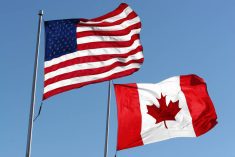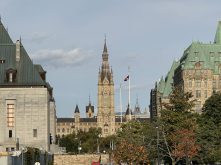Robert Lighthizer has confirmed what trade analysts have been saying for a while: a new and improved North American Free Trade Agreement is a long way off.
Earlier in May there was hope that Mexico, Canada and the United States could finalize a deal or possibly achieve an agreement in principle this month.
But Lighthizer, the U.S. Trade Representative, stomped on that optimism May 17.
“The NAFTA countries are nowhere near close to a deal,” Lighthizer said in a statement, as reported by The Hill. “As I said last week, there are gaping differences on intellectual property, agricultural market access… energy, labour, rules of origin, geographical indications and much more,”
Read Also

Farming Smarter receives financial boost from Alberta government for potato research
Farming Smarter near Lethbridge got a boost to its research equipment, thanks to the Alberta government’s increase in funding for research associations.
Trade negotiators for the three nations have been meeting, on and off, since late April in Washington.
Some trade analysts assumed they would reach a deal this month, in what would be the eighth or ninth round of negotiations, depending on how the counting is done.
Mexico, Canada and the U.S. began formal negotiations in August to modernize the 24-year-old trade deal.
Three weeks ago, the mood around the talks was positive and many thought a deal was imminent. U.S. representatives were saying it was urgent to get an agreement by the middle of May, because the U.S. Congress needed sufficient time to ratify the deal before Congressional midterm elections in November.
If the Democrats regain control of the House of Representatives then, it could be harder to ratify a NAFTA 2.0. There’s also a national election in Mexico July 1, which could further complicate the NAFTA talks.
Many trade analysts agreed with Lighthizer’s pessimistic assessment.
Patrick Leblond, University of Ottawa associate-professor of public and international affairs, said many difficult issues remain on the negotiating table, such as America’s proposal for a ‘sunset clause’ where the deal is re-opened every five years.
“Then there are all those other issues, whether it’s labour or the environment, that we don’t know about,” Leblond said.
Other experts have made the same observation, noting it could take months or years to negotiate the remaining chapters of the agreement.
“By some reports, the volume of outstanding legal text facing the negotiators would require about nine months of talks under normal circumstances,” said Laura Dawson, director of the Wilson Centre’s Canada Institute in Washington, in a Globe & Mail editorial.
Since a May deal is now unlikely, negotiations could stretch out into the summer, fall and possibly into 2019.
Lighthizer vowed to press on and achieve a NAFTA 2.0.
“We of course will continue to engage in negotiations, and I look forward to working with my counterparts to secure the best possible deal for American farmers, ranchers, workers, and businesses.”
However, it seems unlikely that NAFTA will be finalized anytime soon because negotiations have now passed a mid-May deadline of House Speaker Paul Ryan.
He remains steadfast that there isn’t sufficient time for Congress to vote on a deal this year, the Financial Post reported.
“This isn’t my arbitrary deadline, that’s just the way the (fast-track trade) law works,”
Contact robert.arnason@producer.com


















